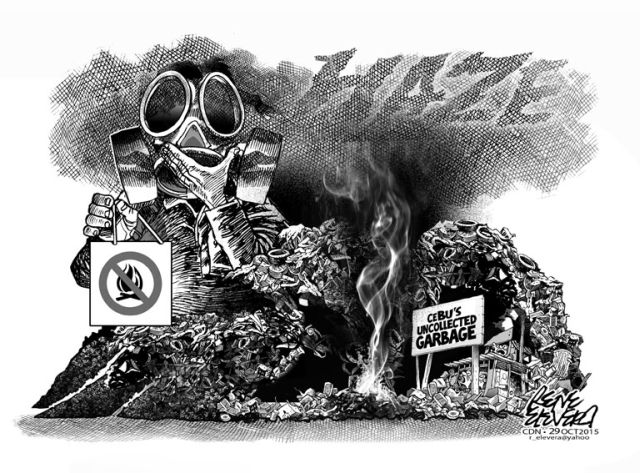Public concern over the haze that has swept Metro Cebu has been on a roller coaster since last weekend’s official confirmation that forest fires in Indonesia are affecting the iair quality here.
On Saturday, the meter readings overshot tolerable limits. Then on Sunday, it eased up.
It depends on various factors — wind strength, time of day, the monsoon blowing. What urban dwellers have to keep in mind is that vehicle exhaust — basic pollution of an excessive number of cars on the road and factories — is also making Metro Cebu choke to a degree approaching Metro Manila.
So now, we have daily monitor reports of air quality from the Environmental Management Bureau (EMB) 7. Everyone is more anxious, if not alert, for changes in the wind and sky.
The agency has acquired new gear to supplement ambient air readings to show not just the number of suspended particles in the air, but the presence of specific gases like nitrogen dioxide, methane and sulphur dioxide, which are a signs of conventional pollution that can’t be blamed alone on the smoke of Indonesian slash-and-burn fields. We await the results.
Unless the Indonesian government has put out the burning forests and plantations in Sumatra, we can’t be complacent. But neither should we go overboard and encourage “everyone” to buy N-95 dust masks or require local governments to allocate budgets to buy them for all their constituents.
That’s what the EMB-7 is unilaterally prescribing amidst fluctuating air readings.
Isn’t it better to be safe than sorry? Precaution sounds like a textbook reply, but when industrial-strength masks cost more than P100 each and a stampede to buy them would make pharmaceutical firms overjoyed before Christmas, we’d like to see firm scientific data.
The main collection of air samples is taking place in the roof top of a luxury hotel next to the Cebu harbor. Can we generalize the haze blanket all over Metro Cebu? Dos it extend beyond to towns north and south? We need a clearer picture.
For vulnerable sectors – children, senior citizens, individuals with heart and lung problems – wearing N-95 face masks provides real relief and protection. But not necessarily for the general public.
That’s an important distinction. Reality check: If we paid attention to the lead content of Metro Manila’s air, where daily fumes of buses, cars and smokestacks blanket the metropolis, everyone should be wearing N-95 masks. They don’t, despite the real health hazard of living in the capital.
On the other hand, Cebuanos walking around the city wearing face masks as if this was a cancer ward or SARS zone, would have a direct effect on tourism, with an economic backlash.
Let’s be practical about this rare phenomenon. Stay indoors when it’s stuffy outside with dust. Keep vehicles off the road if the trip isn’t essential. Don’t light up firecrackers in the holidays or burn leaves or trash. Until the air clears up, let’s cut back on excess and make sensible sacrifices.
Disclaimer: The comments uploaded on this site do not necessarily represent or reflect the views of management and owner of Cebudailynews. We reserve the right to exclude comments that we deem to be inconsistent with our editorial standards.

